Jeep Compass vs SsangYong Korando - Differences and prices compared
Costs and Efficiency:
Price and efficiency are key factors when choosing a car – and this is often where the real differences emerge.
SsangYong Korando has a noticeable advantage in terms of price – it starts at 27000 £, while the Jeep Compass costs 34200 £. That’s a price difference of around 7209 £.
Fuel consumption also shows a difference: Jeep Compass manages with 5.80 L and is therefore evident more efficient than the SsangYong Korando with 7.50 L. The difference is about 1.70 L per 100 km.
In terms of energy consumption, the advantage goes to the SsangYong Korando: with 16.80 kWh per 100 km, it’s hardly perceptible more efficient than the Jeep Compass with 17.50 kWh. That’s a difference of about 0.70 kWh.
As for range, the Jeep Compass performs evident better – achieving up to 500 km, about 161 km more than the SsangYong Korando.
Engine and Performance:
Power, torque and acceleration are the classic benchmarks for car enthusiasts – and here, some clear differences start to show.
When it comes to engine power, the Jeep Compass has a somewhat edge – offering 213 HP compared to 190 HP. That’s roughly 23 HP more horsepower.
In acceleration from 0 to 100 km/h, the SsangYong Korando is barely noticeable quicker – completing the sprint in 8.40 s, while the Jeep Compass takes 8.50 s. That’s about 0.10 s faster.
In terms of top speed, the SsangYong Korando performs barely noticeable better – reaching 191 km/h, while the Jeep Compass tops out at 188 km/h. The difference is around 3 km/h.
There’s also a difference in torque: SsangYong Korando pulls slight stronger with 360 Nm compared to 345 Nm. That’s about 15 Nm difference.
Space and Everyday Use:
Whether family car or daily driver – which one offers more room, flexibility and comfort?
Seats: offers more seating capacity – vs .
In curb weight, SsangYong Korando is barely noticeable lighter – 1517 kg compared to 1667 kg. The difference is around 150 kg.
In terms of boot space, the SsangYong Korando offers slight more room – 551 L compared to 550 L. That’s a difference of about 1 L.
In maximum load capacity, the Jeep Compass performs noticeable better – up to 1561 L, which is about 313 L more than the SsangYong Korando.
Who wins the race?
The Jeep Compass proves to be secures victory with a clear margin and therefore becomes our DriveDuel Champion!
Jeep Compass is the better all-rounder in this comparison.
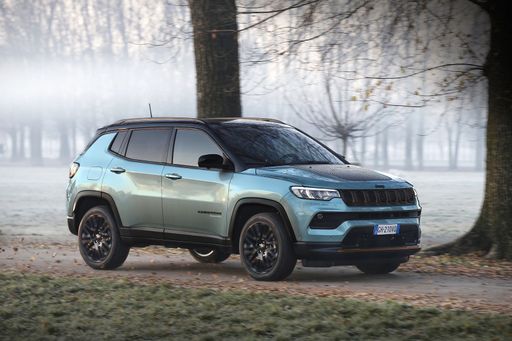 @ Jeep / Stellantis Media
@ Jeep / Stellantis Media
Jeep Compass
Costs and Consumption
View detailed analysis
Engine and Performance
View detailed analysis
Dimensions and Body
View detailed analysis
Jeep Compass
The Jeep Compass packs classic Jeep styling with a surprisingly composed demeanor, equally at home turning heads in the city or tackling a weekend dirt track. Inside it's a pragmatic, user-friendly compact SUV that prioritizes comfort and versatility — a smart pick if you want a dose of adventure without giving up everyday sense.
details @ Jeep / Stellantis Media
@ Jeep / Stellantis Media
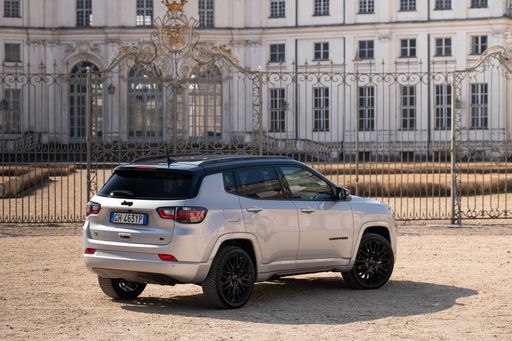 @ Jeep / Stellantis Media
@ Jeep / Stellantis Media
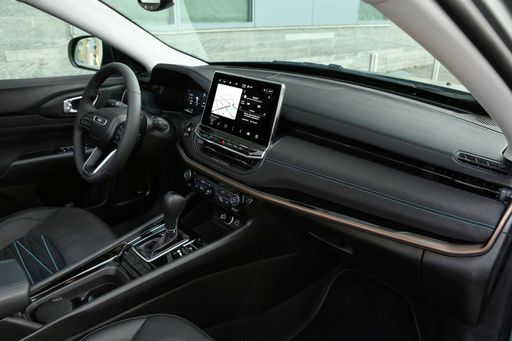 @ Jeep / Stellantis Media
@ Jeep / Stellantis Media
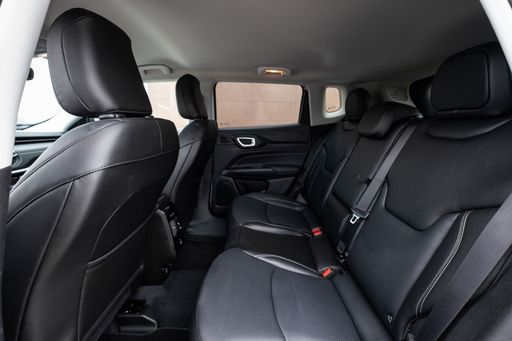 @ Jeep / Stellantis Media
@ Jeep / Stellantis Media
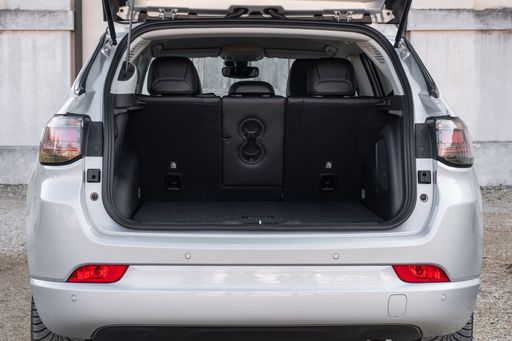 @ Jeep / Stellantis Media
@ Jeep / Stellantis Media
SsangYong Korando
The SsangYong Korando pairs bold, modern styling with a surprisingly roomy and practical cabin, so it looks confident at the lights and handles the daily grind without fuss. It swaps flashy badges for honest value, offering a composed ride, useful equipment and wallet-friendly running that make it an appealing pick for buyers who'd rather spend on weekends than on extravagant finance packages.
details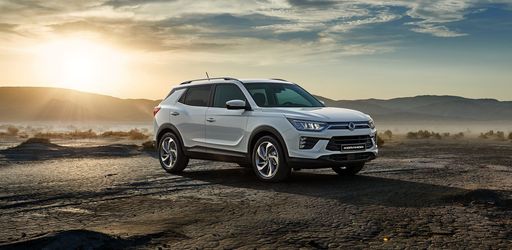 @ SsangYong Motor / KG Mobility
@ SsangYong Motor / KG Mobility
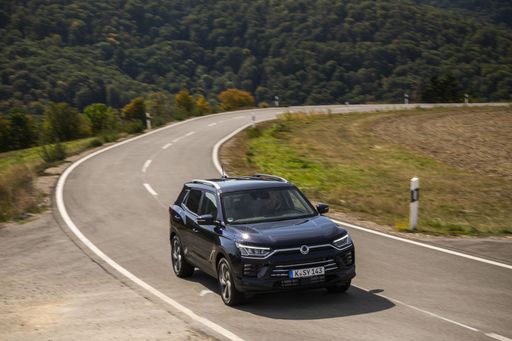 @ SsangYong Motor / KG Mobility
@ SsangYong Motor / KG Mobility
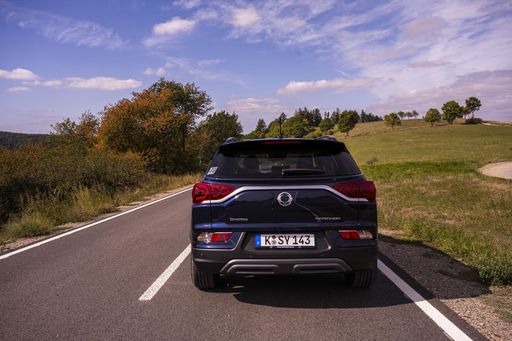 @ SsangYong Motor / KG Mobility
@ SsangYong Motor / KG Mobility
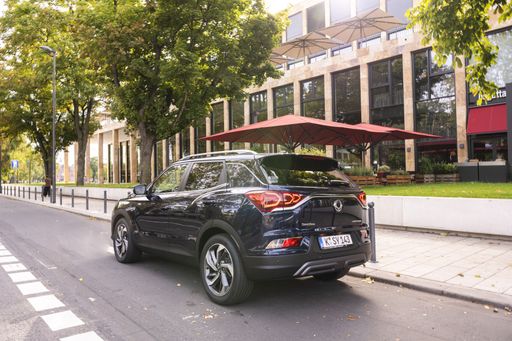 @ SsangYong Motor / KG Mobility
@ SsangYong Motor / KG Mobility
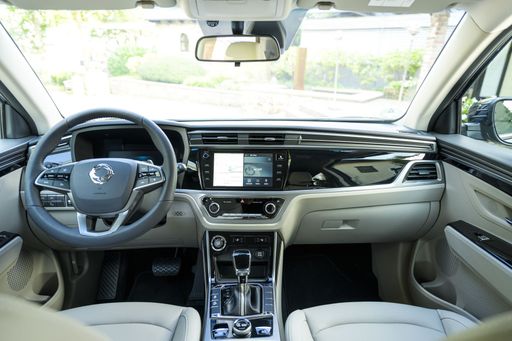 @ SsangYong Motor / KG Mobility
@ SsangYong Motor / KG Mobility
 @ Jeep / Stellantis Media
@ Jeep / Stellantis Media
|
 @ SsangYong Motor / KG Mobility
@ SsangYong Motor / KG Mobility
|
|
|
|
Costs and Consumption |
|
|---|---|
|
Price
34200 - 43200 £
|
Price
27000 - 42000 £
|
|
Consumption L/100km
5.8 - 5.9 L
|
Consumption L/100km
7.5 - 8.6 L
|
|
Consumption kWh/100km
17.50 kWh
|
Consumption kWh/100km
16.80 kWh
|
|
Electric Range
500 km
|
Electric Range
339 km
|
|
Battery Capacity
74 kWh
|
Battery Capacity
-
|
|
co2
0 - 133 g/km
|
co2
0 - 197 g/km
|
|
Fuel tank capacity
55 L
|
Fuel tank capacity
50 L
|
Dimensions and Body |
|
|---|---|
|
Body Type
SUV
|
Body Type
SUV
|
|
Seats
5
|
Seats
5
|
|
Doors
5
|
Doors
5
|
|
Curb weight
1667 - 2198 kg
|
Curb weight
1517 - 1840 kg
|
|
Trunk capacity
550 L
|
Trunk capacity
551 L
|
|
Length
4552 mm
|
Length
4450 - 4465 mm
|
|
Width
1928 mm
|
Width
1870 mm
|
|
Height
1675 mm
|
Height
1620 - 1645 mm
|
|
Max trunk capacity
1561 L
|
Max trunk capacity
1248 L
|
|
Payload
-
|
Payload
410 - 463 kg
|
Engine and Performance |
|
|---|---|
|
Engine Type
Petrol MHEV, Electric
|
Engine Type
Petrol, Electric
|
|
Transmission
Automatic
|
Transmission
Manuel, Automatic
|
|
Transmission Detail
Dual-Clutch Automatic, Reduction Gearbox
|
Transmission Detail
Manual Gearbox, Automatic Gearbox, Reduction Gearbox
|
|
Drive Type
Front-Wheel Drive
|
Drive Type
Front-Wheel Drive, All-Wheel Drive
|
|
Power HP
145 - 213 HP
|
Power HP
163 - 190 HP
|
|
Acceleration 0-100km/h
8.5 - 10.3 s
|
Acceleration 0-100km/h
8.40 s
|
|
Max Speed
180 - 188 km/h
|
Max Speed
156 - 191 km/h
|
|
Torque
230 - 345 Nm
|
Torque
260 - 360 Nm
|
|
Number of Cylinders
3 - 4
|
Number of Cylinders
4
|
|
Power kW
107 - 157 kW
|
Power kW
120 - 140 kW
|
|
Engine capacity
1199 cm3
|
Engine capacity
1497 cm3
|
General |
|
|---|---|
|
Model Year
2025
|
Model Year
2021 - 2023
|
|
CO2 Efficiency Class
D, A
|
CO2 Efficiency Class
F, G, A
|
|
Brand
Jeep
|
Brand
SsangYong
|
What drivetrain options does the Jeep Compass have?
The Jeep Compass is available as Front-Wheel Drive.
The prices and data displayed are estimates based on German list prices and may vary by country. This information is not legally binding.
